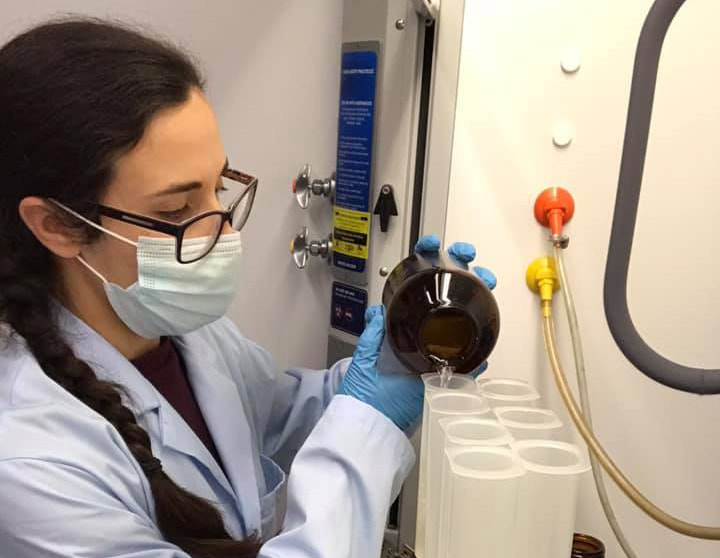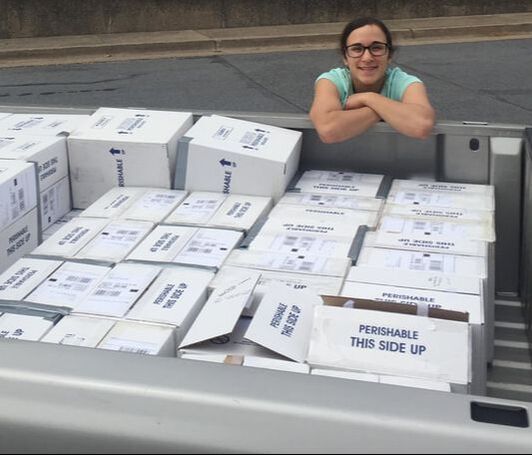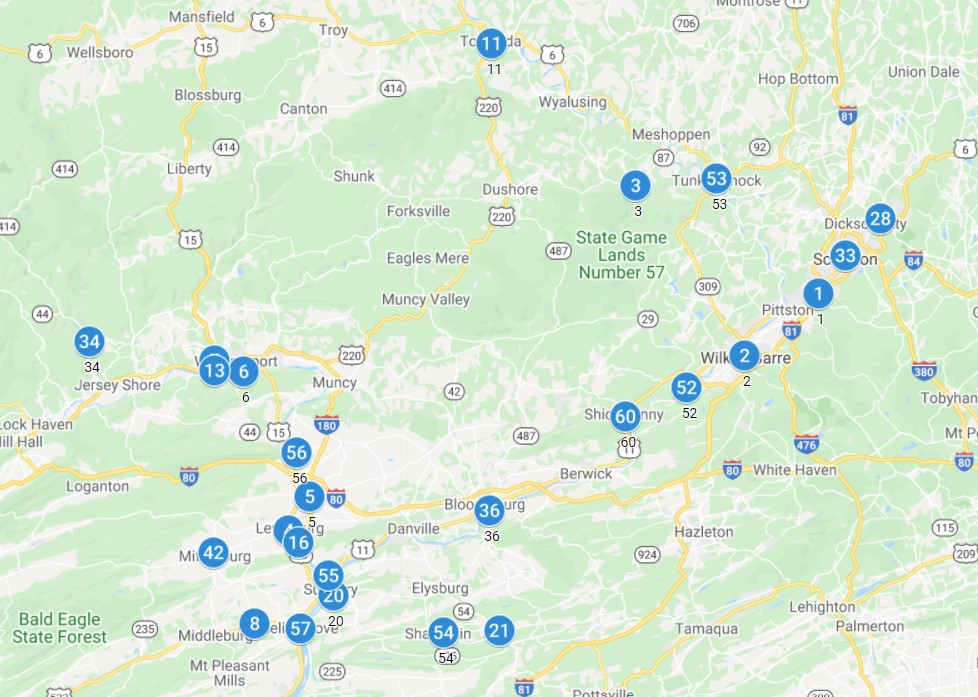|
During the process of investigating an unexplained smallmouth bass die-off in 2018, the United States Geological Society and the Department of Environmental Protection found areas of concentrated endocrine disruptors within the waterway. The cause of death later was determined to be a virus or disease, but researchers noticed an alarming trend among the bass found in areas where endocrine disruptor levels were the highest.
Impact varies
One of the most challenging aspects of dealing with the endocrine disruptor threat involves its widely varied impact on different species. “One of the species we’ve noticed most impacted would be the smallmouth bass,” said Smith. “While the component of the research that has garnered he most attention has bene about reproductive endocrine disruption – or intersex issues – there is also evidence that it is affecting immune function.” According to Hayden, frogs are also an important indicator species. “Amphibians in general have permeable skin, and they absorb a lot of what’s in the water and therefore are a good indicator of overall ecosystem health,” she said. “One study recently looked at vernal pools impacted by leaky septic tanks. It found that frogs in those vernal pools had more physical abnormalities, including extra hind limbs and behavioral issues.” Another study has recorded behavioral changes in benthic invertebrates located in areas with concentrated EDCs, Hayden added. Smith admitted that researchers have yet to fully appreciate the potential negative ripple effect of EDCs on waterways across the state. “The scape and scope of these effects are concerning. To think that they could affect everything from reproductive function to immune function to chemical communication between animals and everything in between is mind-boggling,” he said. “It affects different organisms differently. A concentration that may greatly impact one species may not have a noticeable impact on another – at least for that same pathway. Depending on what organism you are looking at and how you are looking, it’s possible to overlook signs of endocrine disruption.” Another concerning trait connected with EDCs – they are known to bioaccumulate. “While they may not have a direct impact on one species, they may have an impact on what preys upon them,” Smith said. “So, while a species may be unaffected or minimally affected by a compound, its transfer to the next step in a food chain may be problematic and potentially more severe.” In spring of 2018 and again in fall of 2019, Hayden and her team at Penn State ran two of what was set to be a three-prong endocrine disruptor study of waterways in the state, including the Susquehanna River and some of its tributaries. “We had 60 citizen scientists pull water samples and send them to us and we looked for a variety of different EDCs,” said Hayden. “In addition to that, we had them take an EDC footprint calculator – our lab developed a way for people to inventory their personal care products, types of cleaners and various health and beauty items. The calculator spits out a number that provides your overall EDC footprint, including what categories contribute the most to your footprint and some recommendations on how to make changes to reduce that footprint.” Via the water samples, Hayden and her team noticed some interesting trends. “In the spring sample, it was a particularly wet year and concentrations of EDCs were low compared to the fall where water level was very low,” she said. “It will be interesting, as we conduct the third leg this summer, to see how flow impacts what we see in terms of EDC concentrations.” The summer study – delayed to this year after COVID cancelled last year’s planned efforts – will be followed with a published report showing results of the testing plus trends found within the EDC footprint calculator results for all 60 citizen scientists who participated. “We want to raise awareness of EDCs to make a difference, and at the end of our report, we plan to provide tips on how you can reduce your own EDC footprint,” said Hayden. “We plan to put this paper out for everyone in the public to see, from the water sample results, concentrations of EDCs in the watershed, and also to better understand the impact that citizen scientists can have in studies such as these. There is real value in citizen science efforts, and we plan to highlight that in the paper we publish after all of this.” Advocating awareness Both Hayden and Smith agree that raising awareness and mindfully making smart choices while shopping provide the most realistic way to combat growing concerns surrounding endocrine disruptors. “These compounds are found in everything from lawn treatment to the foods we eat (especially soy-based and processed foods) to the soaps and cosmetics that we use,” said Smith. “While you think they are just leaving your house and going to a treatment plant (or your septic system), those operations are not designed to remove these compounds.” Asked what one product people should focus on to start their purge of EDC dependence, Hayden suggested household cleaners. “A lot of them contribute to our EDC footprints, and you can replace them with things like water, baking soda and vinegar,” she said. “It is also important to get more familiar with labels on products. If you see a compound you don’t understand, think about that. Research it. Stick with products that are fragrance-free, that are green or EPA certified. There are a lot of little things we can do to reduce our EPC footprint and what we put in our waterways.” While big industry and agricultural sources feed into the endocrine disruptor issue, Smith pointed out that normal day-to-day activities and habits also contribute to the problem. “Even though it is at a smaller scale, those numerous households (and the EDCs they release) all start to add up,” he said. “That is the point where we can quickly have the most impact because we can change our own behaviors with a little education and some hard work.” If you would like to calculate your own endocrine disruptor footprint, full out Penn State’s calculator survey at www.sites.psu.edu/edccalculator/
2 Comments
James Shallenberger
5/19/2021 04:25:02 pm
Thanks for bringing this story forward John - the EDC footprint calculator is easy to use and very informative and the citizen scientist-collected data gives Kathryn’s team great broad-scale snapshots of the levels and spread of these disturbing substances in our environment.
Reply
Leave a Reply. |
AuthorsRiverkeeper John Zaktansky is an award-winning journalist and avid promoter of the outdoors who loves camping, kayaking, fishing and hunting with the family. Archives
April 2024
Topics |




 RSS Feed
RSS Feed